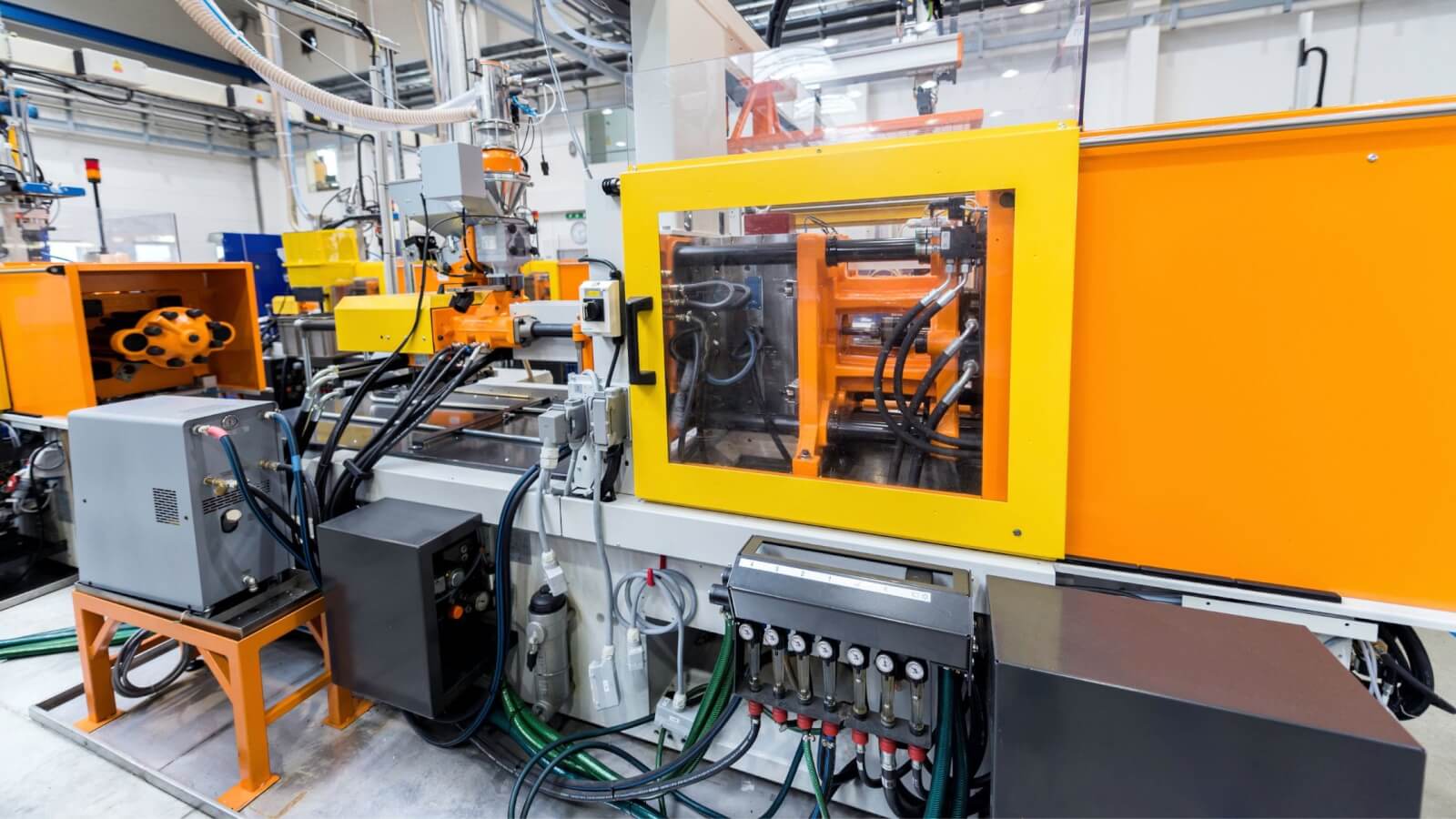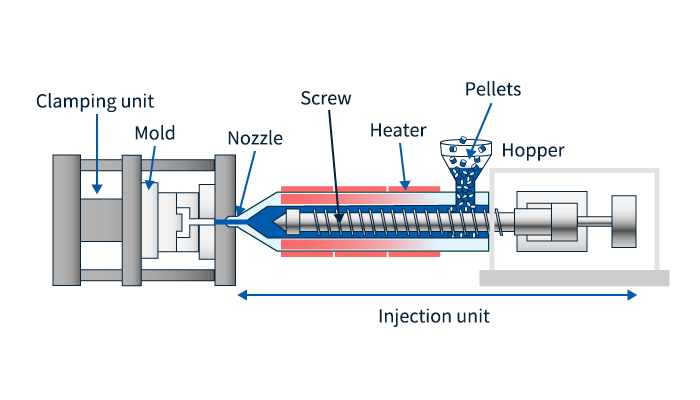The Advantages of Using Plastic Injection Molding for Custom Parts Manufacturing
The Advantages of Using Plastic Injection Molding for Custom Parts Manufacturing
Blog Article
Recognizing the Essentials of Plastic Injection Molding Procedures
Plastic shot molding serves as a cornerstone of modern-day manufacturing, giving a systematic approach to generating intricate elements with precision. This procedure not just includes the essential steps of melting and injecting materials right into molds but also involves a nuanced understanding of different affecting variables, such as temperature and pressure. As industries significantly demand efficiency and top quality, the complexities of this approach come to be much more important. Checking out these essential elements could expose exactly how even minor changes can cause substantial enhancements in production end results, raising inquiries regarding the possibility for development in this well established process.
What Is Plastic Shot Molding?
Plastic injection molding is an extensively used manufacturing procedure that transforms polycarbonate and thermosetting products right into specific and complex forms. This technique is favored for its capability to create high quantities of the same get rid of exceptional precision, making it an important approach in numerous industries, including auto, customer items, and medical gadgets.
The process involves thawing the picked plastic material and infusing it into a mold under high stress. The mold and mildew, created to the specs of the preferred component, enables the liquified plastic to take shape as it strengthens and cools down. As soon as the product has actually solidified, the mold is opened up, and the completed part is ejected.
Plastic injection molding supplies numerous benefits, including minimized waste, consistency in manufacturing, and the capacity to incorporate elaborate styles that may be testing with various other making approaches. Additionally, it supports a wide variety of materials, each providing distinct properties that can be customized for particular applications. As sectors remain to innovate, plastic injection molding continues to be at the center, making it possible for the development of advanced items that meet developing consumer demands.
The Injection Molding Process
The injection molding process is an advanced technique that entails a number of crucial phases to generate high-grade plastic parts. Originally, plastic pellets are fed into a heated barrel where they are merged a viscous liquid. This molten plastic is then infused under high stress into a precision-engineered mold, which forms the product into the desired kind.
When the mold is loaded, the plastic is permitted to cool and solidify, taking the form of the mold and mildew tooth cavity. Cooling time is critical, as it influences the cycle time and the final residential or commercial properties of the shaped component. After sufficient air conditioning, the mold opens up, and the completed component is expelled using ejector pins.

Materials Made Use Of in Shot Molding
Different products can be made use of in the shot molding process, each offering distinct residential or commercial properties that provide to details applications. The most commonly utilized products consist of thermoplastics, thermosetting plastics, and elastomers.

Thermosetting plastics, like epoxy and phenolic materials, undertake a chemical change throughout the curing procedure, causing a stiff, stringent framework. These products are perfect for applications calling for high heat resistance and architectural honesty, frequently made use of in electrical insulators and auto parts.
Elastomers, consisting of silicone and rubber-based materials, give adaptability and resilience. Their unique buildings make them appropriate for applications that require elasticity, such as seals and gaskets.
Furthermore, specialty products like bio-based plastics and compounds are obtaining grip for their environmental benefits and enhanced performance qualities, expanding the extent of injection molding applications in various sectors. Recognizing the residential properties of these materials is important for picking the ideal type for certain jobs.
Advantages of Injection Molding
Injection molding sticks out as an extremely reliable production process that uses many advantages for creating complex get rid of accuracy. Among Clicking Here the most significant benefits is the ability to produce intricate designs that would be tough or difficult to attain with various other methods (Plastic Injection Molding). The procedure allows for limited tolerances and comprehensive features, making sure top quality components
Additionally, shot molding is understood for its quick production capabilities, making it an ideal selection for high-volume manufacturing. As soon as the mold and mildew is created, components can be created promptly, lowering lead times and boosting general efficiency. This performance not only decreases production expenses however also supplies an one-upmanship on the market.
The convenience of products made use of in shot molding better boosts its charm. A variety of thermoplastics and thermosetting polymers can be employed, enabling makers to pick materials that best meet their particular requirements, consisting of warmth, strength, and versatility resistance.
Furthermore, the procedure lessens waste, as excess material can typically be reused and reused. This sustainability aspect adds to a decreased ecological impact, making shot molding a visit the site liable production option. pop over here On the whole, the benefits of injection molding make it a preferred method for many industries.
Variables Influencing Item High Quality
While countless variables can influence item top quality in injection molding, understanding these components is crucial for achieving ideal results. Key elements consist of material choice, refining parameters, and mold design.
Product option plays an essential function, as different polymers exhibit one-of-a-kind residential or commercial properties that affect flowability, stamina, and thermal stability. Poor product choice can result in problems such as bending or incomplete filling.
Processing criteria, consisting of pressure, cycle, and temperature level time, need to be diligently regulated. Variations in these setups can result in variances partially dimensions and surface coating. Excessively high temperatures might cause deterioration of the polymer, while insufficient pressure can result in brief shots.
Mold and mildew layout is equally essential, as it figures out the flow of the molten plastic and the cooling procedure. Badly created mold and mildews might cause irregular cooling rates, leading to residual stresses and dimensional mistakes.

Final Thought
To conclude, plastic shot molding functions as a vital production process that enables the efficient manufacturing of premium parts. Mastery of the injection molding process, including the understanding of products and the influence of numerous variables on product quality, is crucial for attaining optimal outcomes. The advantages of this approach, such as cost-effectiveness and design adaptability, further emphasize its significance throughout numerous industries, solidifying its standing as a recommended option for high-volume production.
Plastic injection molding serves as a keystone of contemporary manufacturing, offering a systematic strategy to creating complex components with accuracy.Plastic shot molding offers numerous benefits, including minimized waste, consistency in manufacturing, and the capacity to incorporate intricate designs that might be challenging with other manufacturing methods (Plastic Injection Molding). As markets continue to innovate, plastic shot molding continues to be at the leading edge, enabling the advancement of innovative products that meet advancing consumer needs
The injection molding procedure is an advanced method that entails several essential phases to generate premium plastic components.In final thought, plastic injection molding offers as a vital manufacturing procedure that makes it possible for the effective manufacturing of high-quality parts.
Report this page